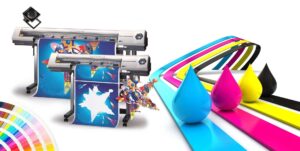Introduction
In the heavily crowded retail market, more and more focus is shifting towards the presentation of the products. Companies are increasingly shifting their marketing strategies to make innovative packaging a center of attention. Packaging after all represents the brand personality and reverberates the value it offers to the consumer. Custom-built boxes are in increasing focus because they are the first interplay between the brand and the consumer. Designing and building the right custom boxes increases the likelihood that a consumer will interact and explore the product offered by the brand.
As a result, most brands have dedicated budgets and vendors with whom teams are working to come up with the right packaging. These teams are working to ensure the right material, design, artwork, and attributes are selected for the product’s packaging needs.
Before jumping into further details of custom-built boxes, let’s have a look at the processes that are involved in their manufacturing.
The Steps in Custom Box Making
When a marketing team decides to order custom-built boxes they should be mindful of the time it takes to build these boxes. There are numerous processes involved in its manufacturing which we will discuss step by step. It takes a lot of designing, printing, and cutting these boxes. Then its transportation and delivery takes further time. Let’s delve into the whole process from order to delivery.
Pre-production process
The following steps take place in the pre-production phase:
Vendor selection and getting a price quote
The first step is to select a vendor that makes custom-built boxes for its clients. These vendors can be easily found online. Many of these vendors are relying on social media marketing to get clients. An individual from the procurement department will start searching for a vendor for custom-built boxes. He or she then in a matter of a day, will start seeing contact information on his/her social media feeds. Moreover, searching on search engines will also display webpages and contact information of vendors. They may also start receiving promotions of these vendors as Google ads.
The second step is to convey your requirements which may include a specific kind of material, printing, quantity, style, and timeframe. The vendor will then provide a price quote after estimating its cost and other factors. The prices are usually inclusive of transportation and delivery charges.
The cost of production of custom-made boxes is inversely proportional to the quantity or amount of boxes ordered. If the order is placed in bulk or large quantity, then there are more chances of a decent discount. It is always better to take price quotes from multiple vendors. Every vendor will have its portfolio and reputation in the form of reviews which is a must check for the companies placing an order. So, it is sagacious to select the vendor with a comparatively better reputation. This will ensure that your order is delivered on time and conforms to your standards in terms of quality of work. Select the vendor that offers the most competitive cost and quick delivery times.
Creating the design and reviewing the prototype
The next step involves leveraging the expertise of designers to create attractive designs and shapes. This will start with the idea of how you want your product to look. Designers have to work hard at this point. They have to collaborate closely with other marketing teams to come up with designs that stand on top of the competition. Design should also reflect brand personality, values, and attributes. It should be good enough to make the customer interact and explore the product.
The design along with features such as eco-friendliness and texture are finalized. After being finalized, they are communicated to the vendor and a prototype is expected. After the approval of that prototype from the senior management which may include the marketing manager, the vendor is given the go-ahead for bulk production.
Manufacturing of Boxes
There are mainly two steps involved in the manufacturing of packaging boxes. These are cutting and printing.
Cutting
The cutting process for custom-built boxes requires high-precision cutting machinery and involves several steps to ensure precision and accuracy. In old times blades were used to cut the material in a process called die cutting. However, in recent times that process has been replaced by machines and is now called digital cutting. The more advanced and efficient the machines are, the neater the cutting.
Printing

This step is more complicated and time-consuming and requires setting up the inks and giving instructions to the printing machines. If a brand chooses custom printing on high-quality boxes, then there are mainly three printing techniques to choose from.
- Digital printing: It is a cost-effective printing option. It mainly consists of full-color prints applied directly to boxes.
- Flexographic printing: It is a basic form of printing, ideal for simple graphics, logos, and images. It is limited in its color combination as one to three colors are only used.
- Litho Laminating: It is the most expensive and complex type of printing. The result of this printing is high-resolution and photorealistic graphics that are directly applied to a paper which is then attached to the box.
Post-production
The last step is the bulk packaging and transportation of your custom-built boxes. if your payment terms include the transportation charges then it will be included in the total lead time. Otherwise, you will have to wait an extra few days depending on the distance between you and the manufacturer. The best vendors working on such projects have an average lead time of not more than seven working days. During transportation, the company will have the leverage to track their order delivery.
Conclusion
We hope this information will be useful for companies looking to hire the services of custom-built box manufacturers. Since these boxes are an inevitable need of the brands, knowing a thing or two about their manufacturing process will enable the brands to negotiate favorable terms with the vendors.


